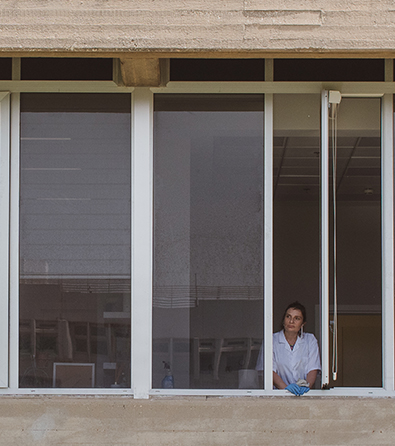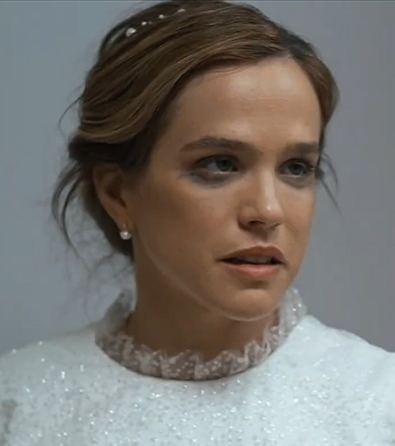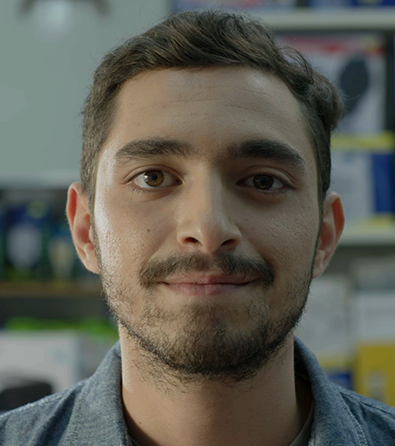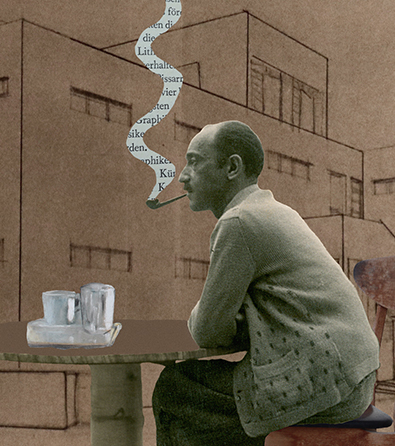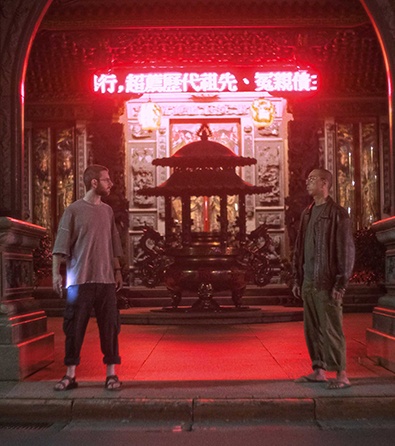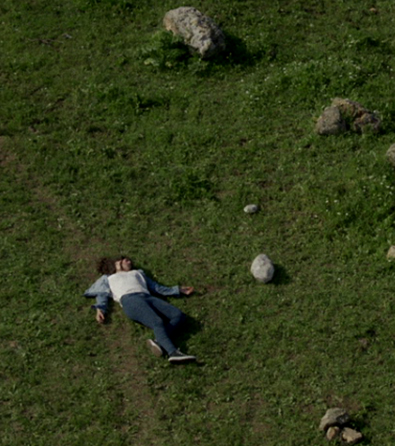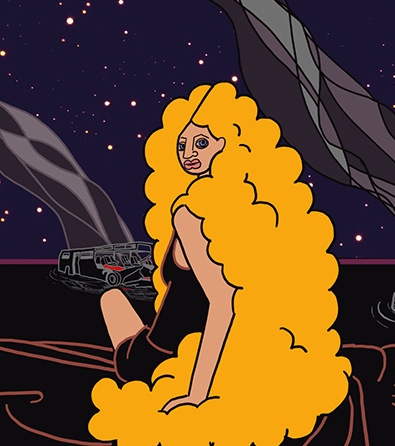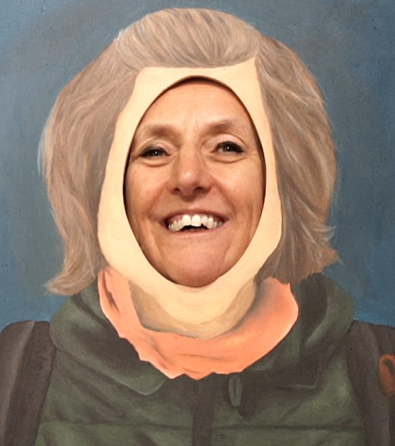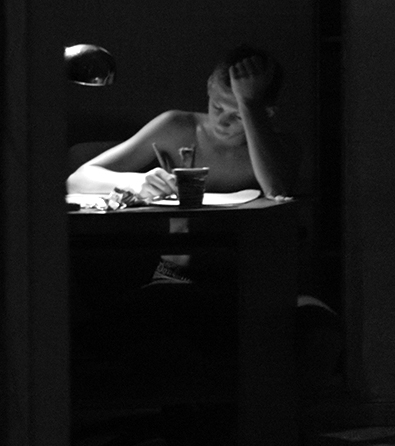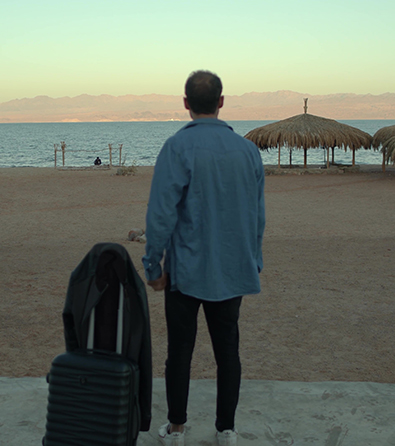The short documentary Fujinoyamai (29 minutes) is available now to watch at the top of the page.
* To watch this film, please approve YouTube/Vimeo cookies via the blue cookie icon at the bottom left of the screen.
Fujinoyamai (Incurable Disease) is an experimental short documentary by Sasha Tamarin. The film has won both the Best Independent Short Film award at the Haifa Festival and the Best Project award in the Video Art and Experimental Cinema category at the Tel-Aviv International Student Film Festival. Its uniqueness lies in its fluid categorization, blending various styles and cinematic languages to capture a single phenomenon: Diamond Fuji. This captivating image occurs when the sun rises precisely at the center of Mount Fuji, causing its rays to break and form a diamond shape. The film follows Sasha’s journey to Japan as he attempts to explore this phenomenon. At its core, the film raises the question of whether this unique event can be experienced by the human eye or only through the camera and the act of filming.
Sasha explores this visual effect by making his cinematic gaze evident through his various cameras. In other words, without physically traveling to Mount Fuji, the only way to experience the mountain’s grandeur is through its reproductions. For example, in his effort to confront his obsession with Mount Fuji, Sasha built a model of the mountain, as shown in the film. But as André Bazin noted, photography liberated other arts from their need to preserve “death.” The essence lies in the ability of photography and cinema to capture and preserve natural phenomena as visual images.
To examine the gap between the human eye and the camera’s eye, Sasha combined the two. Contemporary digital tools, such as GoPro cameras and other lightweight digital cameras, enable filmmakers to realize the vision of Soviet filmmaker Dziga Vertov and his “Kino-Eye” (and his other various similar terms, including Ex-Ray Eyes). Vertov believed that the Kino-Eye represented “what the human eye does not see,” highlighting the unique visual capabilities of the camera. He stated that the inherent abilities of the lens and camera allow one to “make the invisible visible […] to make the hidden manifest.” In his films, the most well-known being “Man with a Movie Camera” (1929), Vertov used cinema’s unique capabilities to transcend reality, employing techniques like speeding up and slowing down footage, and fragmenting and recombining shots within a single frame to reveal poetic images that only a movie camera could capture.
While Sasha’s cinematic gaze is more grounded than Vertov’s, he also seeks to use the combination of the eye and the cinema to uncover not only the mysteries of Mount Fuji but also the personal stories of the Japanese people he encounters on his journey. His use of a GoPro camera mounted on his forehead during interactions with Japanese passersby offers viewers a direct perspective of what he sees. This approach aims to create a sense of closeness with those he doesn’t know and whose language he does not speak. Through Sasha’s viewpoint, the camera fosters intimacy for the audience. Even when Sasha uses his standard camera for interviews or conversations, he holds it in his hand, maintaining a direct link to his own perspective. In this way, the camera becomes a mediating tool that helps Sasha communicate with his environment. Notably, many of the Japanese individuals Sasha interacts with are photographers themselves, drawn to the area to capture the Diamond Fuji phenomenon.
The camera serves not only as an indexical device but also as a tool that allows Sasha and the photographers he meets to create a shared language when verbal communication falls short. In sharp contrast to the dynamic, close-up shots of people, Mount Fuji is depicted in the film only through static shots, emphasizing its vastness and making those around it appear smaller. Unlike the immediacy and freedom seen in the shots of people, the stillness and distance of the camera from the mountain underscore its imposing presence, which can only be fully appreciated through a stable, distant gaze. On the one hand, the majestic mountain captivates and anchors the camera’s gaze. On the other hand, the human interactions that take place at the mountain’s base free the gaze, inviting curiosity and connection with both familiar and unfamiliar perspectives. It could even be said that the true secret of the mountain, which Sasha aims to uncover, is revealed in the shared gaze that forms between him and the Japanese photographers.
Sasha’s human connection with his surroundings echoes the documentary style of Agnès Varda, particularly in her later works such as “The Gleaners and I” (2000) and “Faces Places” (2017). These films, which blend travelogue and essay formats, allowed Varda to reflect on her own aging and artistic journey through the people she encountered across France. The portability and simplicity of digital cameras liberated Varda from the complexities and large crews associated with traditional film productions. The accessibility, immediacy, and ease of using digital cameras enabled her to film even when she lacked funding, while still fostering a sense of intimacy with her subjects. In “The Gleaners and I,” for instance, Varda compared the act of gleaning—whether for food or repurposing discarded items—to her cinematic process of collecting images and stories. The conclusion of Fujinoyamai even pays homage to the low-budget digital effects that Varda first used with her small camera in the film.
After the unsuccessful attempt to film Diamond Fuji, a title card informs viewers that prolonged exposure to sunlight has damaged Sasha’s camera sensor. The following scenes reveal the result: all the footage has turned pink. Not only are the once-clear skies now a vivid pink, but Sasha also heightens this moment with electro-pop music, emphasizing the humor in the failure—both the film’s intent and the camera’s malfunction. Reflecting the Japanese perspective, where failure is seen as an integral part of the journey rather than its end, Sasha views this double failure as a source of joy. It is through this distorted image that the film transcends reality and human perception, revealing something hidden and unique to the audience.
